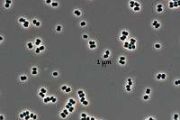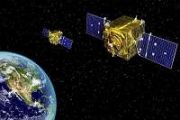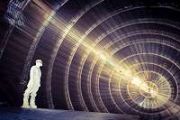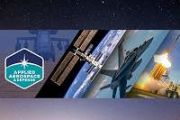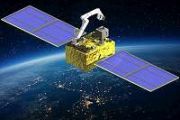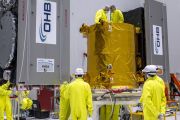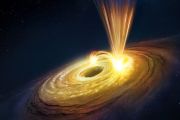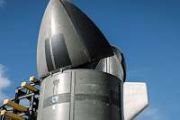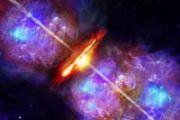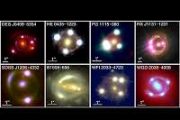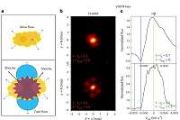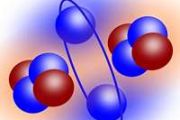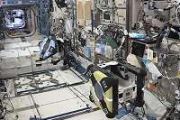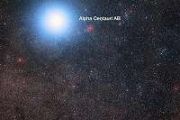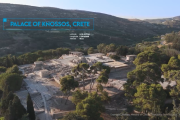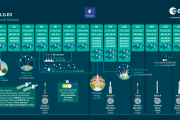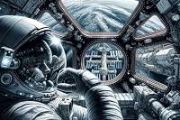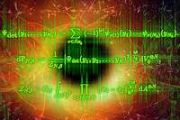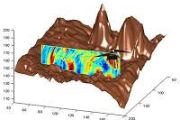
Copernical Team
How scientists reviewed the process and development of space intelligent robot technology?
 It is an inevitable choice for the development of space automation technology to use space intelligent robots to realize space exploration and space resource utilization. China started with the successful launch of the Tianhe Core Module in 2021, and intends to build a large-scale, long-term manned national space laboratory during 2021-2022, and gradually develops into the China's Space Station
It is an inevitable choice for the development of space automation technology to use space intelligent robots to realize space exploration and space resource utilization. China started with the successful launch of the Tianhe Core Module in 2021, and intends to build a large-scale, long-term manned national space laboratory during 2021-2022, and gradually develops into the China's Space Station Hubble uses gravity lense to spot most distant star ever seen
 NASA's Hubble Space Telescope has established an extraordinary new benchmark: detecting the light of a star that existed within the first billion years after the universe's birth in the big bang - the farthest individual star ever seen to date.
The find is a huge leap further back in time from the previous single-star record holder; detected by Hubble in 2018. That star existed when the un
NASA's Hubble Space Telescope has established an extraordinary new benchmark: detecting the light of a star that existed within the first billion years after the universe's birth in the big bang - the farthest individual star ever seen to date.
The find is a huge leap further back in time from the previous single-star record holder; detected by Hubble in 2018. That star existed when the un Milky Way encirciles the Galactic Bar with vast stellar ring
 Using a combination of observed stars and a realistic model of the Milky Way, scientists at the Max Planck Institute for Extraterrestrial Physics have found a new structure in our home galaxy. Just outside the Galactic bar, they found an inner ring of metal rich stars, which are younger than the stars in the bar.
The ages of the ring stars can be used to estimate that the bar must have for
Using a combination of observed stars and a realistic model of the Milky Way, scientists at the Max Planck Institute for Extraterrestrial Physics have found a new structure in our home galaxy. Just outside the Galactic bar, they found an inner ring of metal rich stars, which are younger than the stars in the bar.
The ages of the ring stars can be used to estimate that the bar must have for UCLA researchers discover source of super-fast 'electron rain'
 UCLA scientists have discovered a new source of super-fast, energetic electrons raining down on Earth, a phenomenon that contributes to the colorful aurora borealis but also poses hazards to satellites, spacecraft and astronauts.
The researchers observed unexpected, rapid "electron precipitation" from low-Earth orbit using the ELFIN mission, a pair of tiny satellites built and operated on
UCLA scientists have discovered a new source of super-fast, energetic electrons raining down on Earth, a phenomenon that contributes to the colorful aurora borealis but also poses hazards to satellites, spacecraft and astronauts.
The researchers observed unexpected, rapid "electron precipitation" from low-Earth orbit using the ELFIN mission, a pair of tiny satellites built and operated on Could a refined space weather model help scientists find life elsewhere
 A refinement to a space weather model developed by a center director at The University of Alabama in Huntsville (UAH) could help scientists check out which planets outside our solar system are likely to have someone home.
Exoplanets are what planets are called when they orbit stars outside our own solar system, and the effort to winnow out those that could harbor life has been intensifying
A refinement to a space weather model developed by a center director at The University of Alabama in Huntsville (UAH) could help scientists check out which planets outside our solar system are likely to have someone home.
Exoplanets are what planets are called when they orbit stars outside our own solar system, and the effort to winnow out those that could harbor life has been intensifying Studying impact craters to uncover the secrets of the solar system
 While for humans the constants might be death and taxes, for planets the constants are gravity and collisions.
Brandon Johnson studies the latter, using information about impacts to understand the history and the composition of planets, moons, asteroids and meteorites throughout the solar system.
"Impact cratering is the most ubiquitous surface process shaping planetary bodies," John
While for humans the constants might be death and taxes, for planets the constants are gravity and collisions.
Brandon Johnson studies the latter, using information about impacts to understand the history and the composition of planets, moons, asteroids and meteorites throughout the solar system.
"Impact cratering is the most ubiquitous surface process shaping planetary bodies," John Frozen beauty in northern Mars
 These images were created using data acquired by the High Resolution Stereo Camera (HRSC), which was developed at the German Aerospace Center (Deutsches Zentrum fur Luft- und Raumfahrt; DLR) and is operated by the DLR Institute of Planetary Research in Berlin-Adlershof. They show a landscape in Utopia Planitia that is millions of years old and was shaped by ice. Utopia is one of three major topo
These images were created using data acquired by the High Resolution Stereo Camera (HRSC), which was developed at the German Aerospace Center (Deutsches Zentrum fur Luft- und Raumfahrt; DLR) and is operated by the DLR Institute of Planetary Research in Berlin-Adlershof. They show a landscape in Utopia Planitia that is millions of years old and was shaped by ice. Utopia is one of three major topo Winning technologies benefit NASA and Industry
 In 2021, NASA recognized four teams from around the agency for inventions and software that will help government and private industry. The new technologies can help improve passenger flights and remotely piloted vehicles, enhance data on our home planet, and help send spacecraft and astronauts to the Moon and beyond.
"Whether creating new space technologies that help wildfire fighters or s
In 2021, NASA recognized four teams from around the agency for inventions and software that will help government and private industry. The new technologies can help improve passenger flights and remotely piloted vehicles, enhance data on our home planet, and help send spacecraft and astronauts to the Moon and beyond.
"Whether creating new space technologies that help wildfire fighters or s Sierra Space to revolutionize space exploration with Siemens' Xcelerator
 Siemens Digital Industries Software has announced that Sierra Space, a leading commercial space company at the forefront of creating and building the future of space transportation and infrastructure for Low Earth orbit (LEO) commercialization, has implemented Siemens' Xcelerator portfolio of software and services as the foundation of its next-generation digital engineering program.
The co
Siemens Digital Industries Software has announced that Sierra Space, a leading commercial space company at the forefront of creating and building the future of space transportation and infrastructure for Low Earth orbit (LEO) commercialization, has implemented Siemens' Xcelerator portfolio of software and services as the foundation of its next-generation digital engineering program.
The co Singapore signs Artemis Accords; Artemis I is 'Go' for Wet Dress Rehearsal
 Singapore demonstrated its commitment to the peaceful and responsible exploration of space by signing the Artemis Accords, which set forth the guiding principles for cooperation among nations participating in NASA's Artemis program. Minister for Trade and Industry Gan Kim Yong signed the document during a ceremony March 28, 2022, in Washington.
Singapore is the 18th country to sign the Art
Singapore demonstrated its commitment to the peaceful and responsible exploration of space by signing the Artemis Accords, which set forth the guiding principles for cooperation among nations participating in NASA's Artemis program. Minister for Trade and Industry Gan Kim Yong signed the document during a ceremony March 28, 2022, in Washington.
Singapore is the 18th country to sign the Art 
